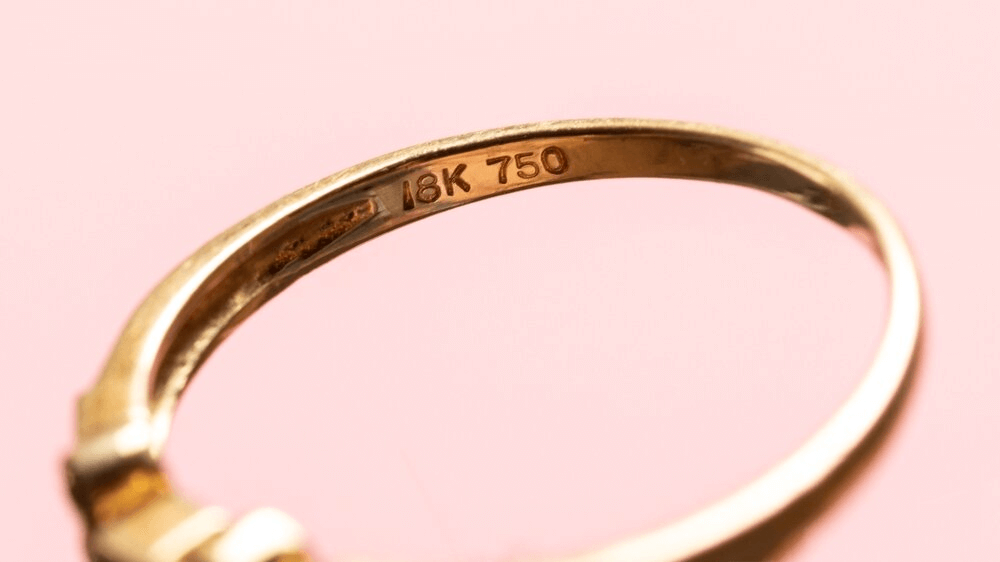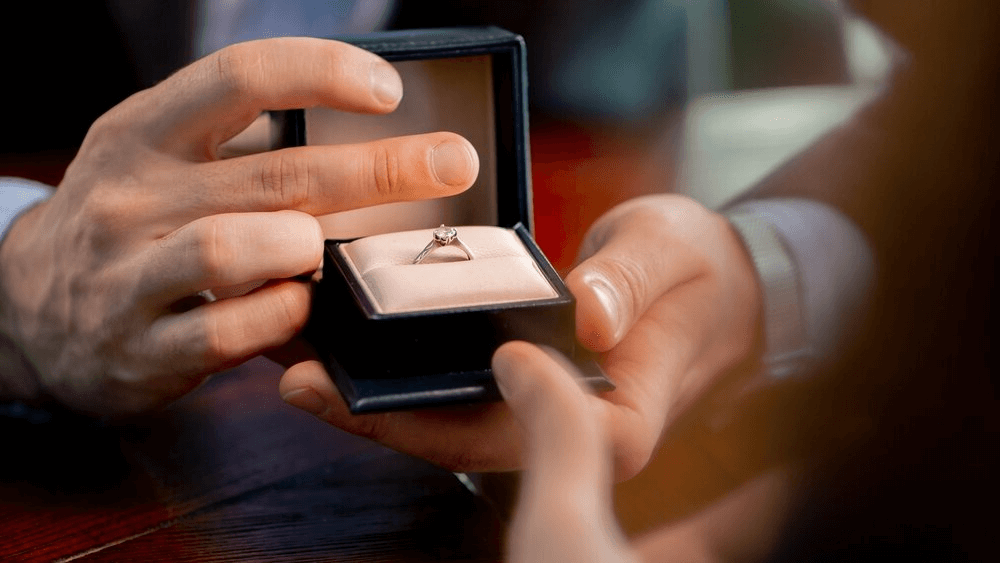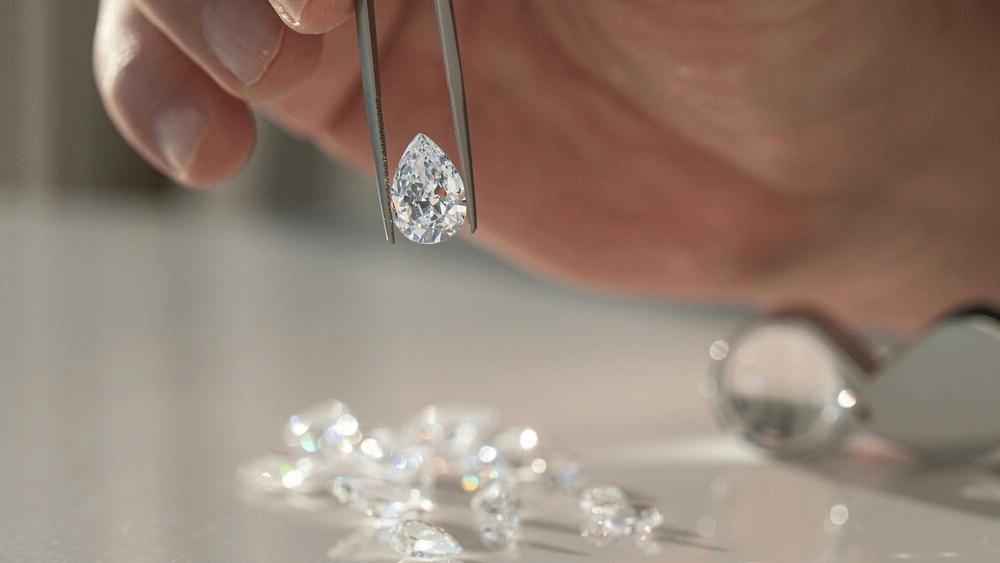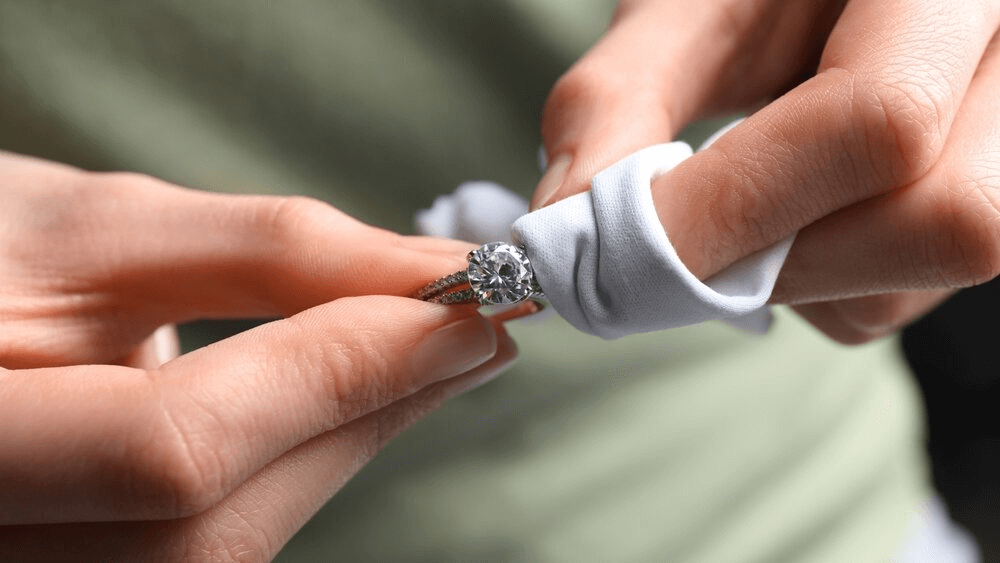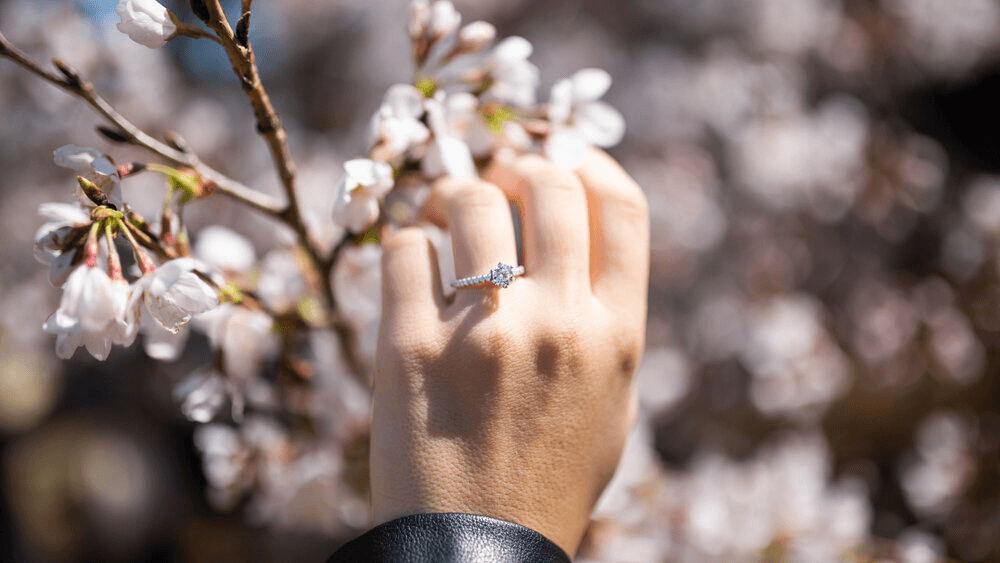Shine a light on Diamond Scams: Protect yourself

By Gary A.

Edited by Olivia H.
Published Mar 17, 2022
Edited on Dec 18, 2024
Entering the diamond world can feel daunting, but with the right knowledge, you can outsmart scammers and secure the perfect stone for your special moment. Let’s dive into the essential tips to protect yourself while shopping for a diamond engagement ring.

Navigate this guide:
- 14 Quick Tips to Avoid Diamond Scams
- Introduction: Navigating the World of Diamond Engagement Rings
- Diamond Simulants vs. Real Diamonds
- The Critical Rule of Diamond Certification
- Risks of Undisclosed Enhancements in Diamonds
- Avoiding Diamond Switching Scams
- Our Expert Take
- 19 FAQs
Before we dive deeper into the specifics, here are some practical tips to help guide your decision-making process:
14 Quick Tips to Avoid Diamond Scams
- Tip 1: Verify Diamond Certification Ensure Authenticity: Always check if the diamond comes with a certification from recognized labs like GIA or AGS. Report Verification: Use online tools provided by these labs to verify the authenticity of the diamond report number.
- Tip 2: Research the Seller’s Reputation Check Reviews: Look up customer reviews and testimonials about the seller or jeweler.
- Tip 3: Understand Diamond Grading Educate Yourself: Learn about the 4Cs of diamond quality – Cut, Color, Clarity, and Carat. Comparison Shopping: Compare diamonds of similar grades across different sellers to understand pricing and quality benchmarks.
- Tip 4: Examine the Diamond Carefully Physical Inspection: Look for any flaws or inclusions in the diamond that might not be mentioned. Use Tools: Employ a jeweler’s loupe or a magnifying glass to inspect the diamond more closely.
- Tip 5: Be Wary of Unbelievable Deals Too Good to Be True: If the deal seems significantly better than the market rate, it could be a red flag. Market Price Knowledge: Stay informed about the current market prices for diamonds of similar grade and size.
- Tip 6: Request a Detailed Sales Receipt Document Details: Ensure the receipt includes a detailed description of the diamond, including its 4Cs and any certification number. Proof of Purchase: A detailed receipt is essential for insurance purposes and future verifications.
- Tip 7: Be Alert to High-Pressure Sales Tactics Avoid Rush Decisions: High-pressure sales tactics are often used in scams. Take your time to decide. Second Opinions: If you feel pressured, consider seeking a second opinion or visiting another jeweler.
Navigating Diamond Switching: 7 Essential Tips
When buying a diamond engagement ring, being aware of potential diamond switching is crucial. Here are practical tips to ensure the diamond you choose remains the diamond you keep.
- Tip 1: Insist on Certified Diamonds
- Always opt for diamonds certified by reputable gemological institutes like the GIA. These certifications detail all the diamond’s characteristics, providing a reliable reference point for its identification.
- Tip 2: Familiarize with Your Diamond’s Unique Traits
- Every diamond has unique inclusions, akin to fingerprints. Familiarize yourself with your diamond’s 4 Cs (carat, clarity, color, and cut) and its specific inclusions to easily identify it.
- Tip 3: Choose Reputable Jewelers
- Purchase your diamond from jewelers with a proven track record of integrity and positive customer feedback. These jewelers value their reputation and are less likely to indulge in unethical practices.
- Tip 4: Verify After Purchase
- Immediately after purchasing, verify that the diamond matches its certification. This could involve a detailed inspection against the certificate’s description of the diamond’s unique features.
- Tip 5: Pre and Post Servicing Checks
- Before handing over your ring for servicing, and after receiving it back, conduct thorough inspections. A clear photograph taken beforehand can serve as a valuable comparison tool.
- Tip 6: Be Wary of Common Switching Tactics
- Understand and be cautious of typical diamond-switching methods used by unscrupulous jewelers, such as unnecessary cleaning requests, which can be a ploy for switching.
- Tip 7: Look for Laser Inscriptions
- If your diamond is laser inscribed (usually for certified diamonds), this can be an additional security feature. Ensure the inscription matches the certification number.
Now that you’ve got these practical tips, use Jeweler AI below to find the perfect engagement ring that suits your style and budget:
Introduction: Navigating the World of Diamond Engagement Rings
Most first-time diamond buyers are at least a little apprehensive about entering into the industry for the first time. It doesn’t take insider knowledge to be keenly aware of the fact that diamonds, being incredibly high in value, represent a pretty attractive target to scammers.
Understanding Diamond Scams in the Engagement Ring Market
These scammers look to take advantage of the lack of understanding many first-time buyers suffer from. While diamond is one of the most distinctive, unique, and irreplaceable natural substances out there, people who have no prior experience seeing, holding, or experiencing these stones can be all too easily tricked into investing into a fake or ‘simulant’ with very little inherent value.
While understanding how to find a beautiful diamond at a good price is essential for any shopper, it’s just as important to understand how to avoid the common diamond scams that are out there – and why you do not want to wind up with a fake.
Educating Yourself: The Power Against Scams
Diamond scams tend to fall into one of two categories. Either someone is trying to sell you a diamond simulant for the price of a real diamond, or someone is trying to sell you a real diamond that is worth far less than they would have you believe.
Here’s what you need to know.
Diamond Simulants vs. Real Diamonds
The two most common diamond simulants are cubic zirconia (CZ) and moissanite. The look of a diamond can also be imitated by white sapphire or rhinestones, but CZ and moissanite are arguably the most common.
In any case, the resemblance diamond simulants have to real diamond is undeniable, but also far from watertight. Someone who has never seen a diamond in the flesh before might be fooled, but we’re confident that even a novice diamond enthusiast would be able to sort the authentic diamonds from the simulants in a couple minutes flat.
While there’s nothing wrong with CZ jewelry, these man-made gemstones are a terrible choice for engagement rings. Weaker, duller, more porous, and far less durable, we can’t imagine anyone electing to invest in CZ for any piece of fine jewelry.
The same goes for moissanite, which features a sparkle far less desirable than the light performance created by a well cut diamond.
That’s why it’s very rare for you to encounter CZ or moissanite in fine jewelers. Some of the larger chains stock these gemstones, but not in their bridal collections.
You can read our full guide to simulants here.
The Risk of Investing in a Simulant
Scammers have realized some good potential in attempting to convince inexperienced shoppers that their CZ or moissanite rings are, in fact, diamond rings. Consider the fact that a 1 carat cubic zirconia ring could cost around $20 to produce – then compare that with the thousands of dollars shoppers are ready to invest into a 1 carat diamond engagement ring.
There are many ways to identify a diamond simulant, but the best way to avoid a simulant altogether is to shop from a trusted vendor that doesn’t make ‘quick money’ selling fake diamonds.
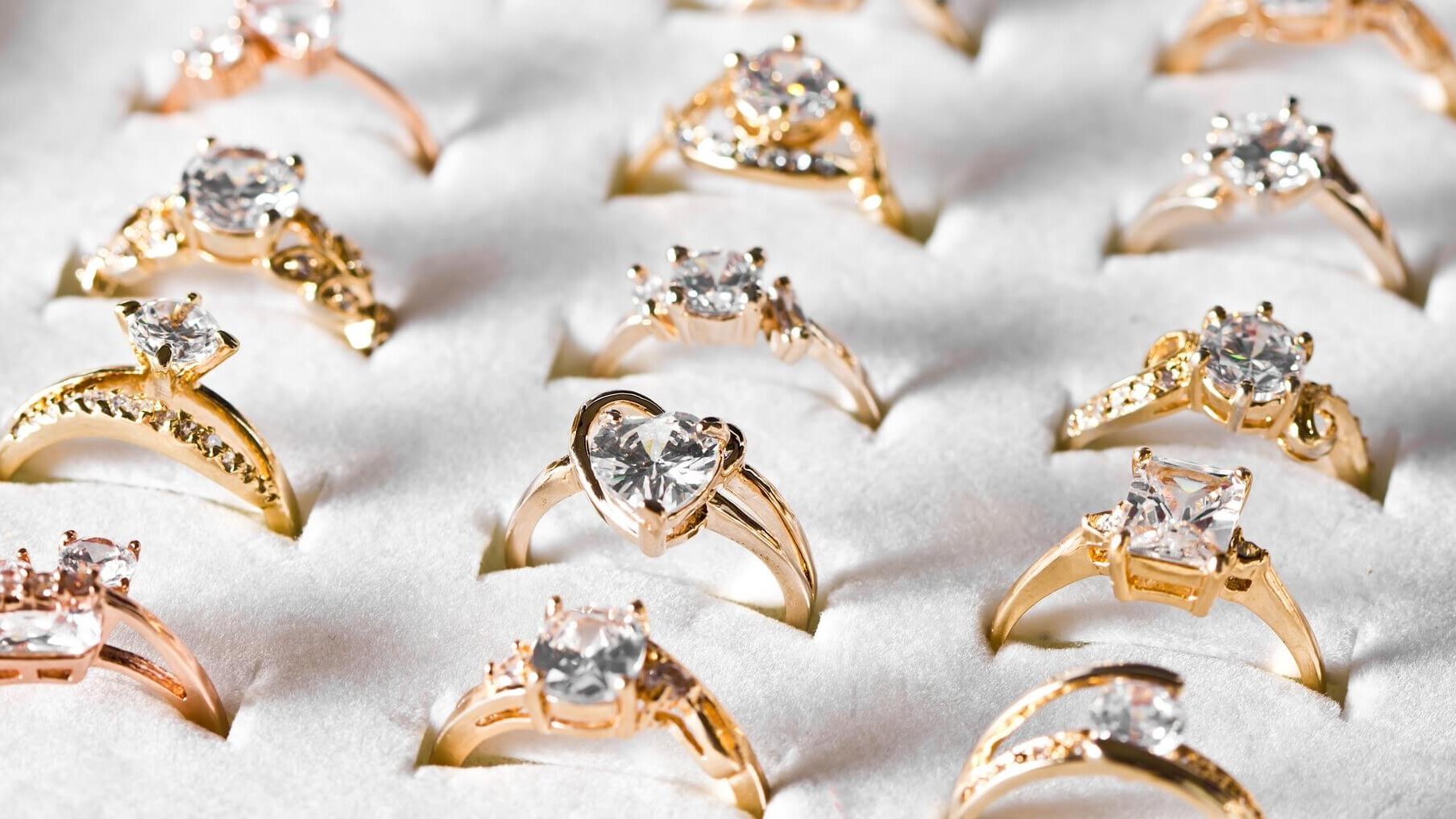
The Critical Rule of Diamond Certification
One of the cardinal rules of investing into a diamond is that you never, ever hand over any money unless the diamond in question is accompanied by a valid diamond report. The GIA or AGS are the only labs we recommend, since they are the only labs consistent enough to offer a strong assurance over the diamond’s true value and quality, and this is pretty standard across large swathes of the industry.
The fact that this is common knowledge means that, for some scammers, forging GIA reports represents a potentially lucrative opportunity. The level of trust this lab inspires in shoppers makes that extra investment of time worthwhile, since most shoppers now know to steer clear of ungraded/uncertified diamonds.
Deciphering Genuine and Forged Reports
While the past saw plenty of diamond scams that centered on sellers trying to convince buyers that they don’t need a certificate at all, it’s more common nowadays for scammers to take the time to create them.
Anyone can think up a lab name, design a report, and start arbitrarily ‘grading’ diamonds. We’ve seen diamonds listed on some online marketplaces as being accompanied by a ‘certificate of authenticity’, which means absolutely nothing, and likely means that the seller just whipped something up on their computer and targeted the most popular grades for Cut, Clarity, and Color.
Alternatively, anyone with a little skill on the computer can create a document that loosely resembles those offered by notable labs. It would be easy enough for an experienced buyer, jeweler, or gemologist to spot the differences, but not for someone with no prior experience, just browsing on their computer. The potential benefits for the scammer are incredibly high, since they can hide behind the reliability of the name while charging thousands of dollars more than the true value of the diamond (or even diamond simulant) that they are selling.
Fortunately, all GIA reports are allocated a unique GIA Report Number, which is logged into their database. Even the most accomplished scammer can’t infiltrate that database, so it’s always best to err on the side of caution and use our GIA Diamond Report Look-Up to ensure the report you’re looking at is genuine.
Then again, provided you’re shopping from a reputable vendor, you don’t need to get caught-up in worries over forged documents.

Risks of Undisclosed Enhancements in Diamonds
Diamond enhancements are artificial processes intended to improve the clarity or color of a diamond, with a view to giving it a higher market value. For many reasons, most shoppers want to avoid clarity and color enhanced diamonds – not least of all because many of these so-called ‘enhancements’ can leave the diamonds with a new set of issues.
Identifying Laser Drilling and Other Treatments
For instance, laser drilling can be used to get rid of unsightly incisions within a diamond. The trouble is, that laser drill hole is permanent, and makes the diamond vulnerable to gathering dirt and grime and, over time, looking even worse than it did before. We consider laser drill holes to be one of the diamond inclusions any shopper should avoid.
People who want to invest in natural diamonds – who value the long, wild history behind these stones and want to celebrate their natural beauty – are not interested in the minor savings associated with clarity and color enhanced diamonds.
Avoiding Diamond Switching Scams
We’ve all heard the horror stories. A friend of a friend (of a friend) took her ring in for a routine clean and tune-up and, after getting it back, realized that her diamond had been switched out for an inferior, cheaper alternative. It’s enough to give anyone nightmares, although it’s certainly not a common occurrence.
It is, however, a great deterrent against entrusting your precious jewelry to just anyone.
The idea is that the jewelers who switch-out diamonds are then able to re-sell that diamond to a new customer – a customer who will, six months down the line, come back into that same store for a clean and tune-up – and so the cycle continues.
There are plenty of stories, anecdotes, and urban legends out there – and it’s an effective cautionary tale against opening the phonebook to a random page and just picking any vendor that pops up – but it’s not something you need to worry yourself over if you’ve tracked down a reputable vendor like WillYou.
What is Diamond Switching?
Diamond switching is, as the name suggests, the practice of promising a customer one thing, and delivering another.
The legend goes that a jeweler will bring out a display of diamonds, talk the customer through it, help them make a decision, and then disappear off into the back room and come back with an inferior stone that the shopper then unwittingly spends their savings on.
That, or there’s the story of the customer who brings their ring into the jewelry store for a routine tune-up, and, when they come to collect it, fails to notice that the center stone has been replaced with something else.
In either scenario, the inference is that the jeweler makes significant money off uneducated customers.
As we will look at below, this is far, far less common than some people suggest it to be. The overwhelming majority of jewelry stores, both online and in real life, are legitimate businesses, run by proprietors who are not interested in duping their customers into parting from thousands of dollars for no reason.
How Diamond Switching Occurs
Diamond switching is predicated on the notion that most shoppers don’t know what they’re talking about when it comes to diamonds. Gemology is a tricky subject in general, and diamonds are, for the average person, a rare sight – relatively speaking.
A lot of a diamond’s unique properties can only be appreciated fully through a jeweler’s loupe. In the middle of a busy jewelry store with so much going on, it is feasible that an inexperienced shopper could be talked into spending money on something that isn’t worth what the jeweler says it’s worth.
But, ultimately, diamond switching occurs because there are unscrupulous people in the world willing to con others out of their savings. It’s not the shopper’s fault, as anyone who is new to the world of diamonds needs to rely on experts who can educate them and guide them in the right direction.
Thankfully, most jewelers do not want to do this. At WillYou, our interest lies in pairing shoppers with the perfect diamond, and in making sure that they understand why the diamond they are choosing is so perfect not only for their budget, but for their vision of the ring and the proposal.
Spotting the Switch: Red Flags and Prevention
In theory, spotting a diamond among a bunch of simulants is easy – even for a beginner. In reality, however, when there’s so much else going on, missing a vital clue and buying a dupe and buying a dupe can happen.
The main red flag will be the vendors themselves. This is true whether you’re looking online, or shopping in person.
Any business that has a positive presence, will have one because of their commitment to quality and working with customers, rather than against them. Check out independent reviews, and read customer testimonials. Look at their commitment to initiatives like Diamonds Do Good, and the types of diamond grading labs that they work with.
At WillYou, this is at the very heart of what we do. We are committed to doing good at every stage in the process, from our sourcing practices to our dedication to customer education and diamond selection. Everything is predicated on that commitment.
Choosing a Trustworthy Jeweler
Look for a jeweler with a genuine interest in educating you on the process of finding a beautiful diamond. To that end, focus on vendors that sell GIA-graded diamonds, since the GIA was formed out of a desire to offer transparency to customers, and ensure a level playing field for jewelers and shoppers alike.
In other words, a strong reputation and the GIA go hand in hand.
Again, read the reviews. If someone is duping customers, it won’t be long before their practises are picked up on by someone who knows more than they let on to the seller.
Dodge vendors who seem intent on shifting large volumes without putting much care and attention into their customers. Every diamond is unique, every customer is unique, and that means that every diamond purchase requires the same level of care and attention. While vendors who shift large volumes each month may not be duping their customers into investing in diamond simulants, they still on investing enough time and attention into their customers.
Identifying Red Flags for a Deceptive Jeweler
There is no definitive red flag for a deceptive diamond seller. At the same time, avoid someone who is trying to sell a diamond to you without…
- A legitimate diamond report
There are a lot of different diamond grading labs that a jeweler can use. The GIA is considered the best of the best – that’s why we use it for all our diamonds — but there are other labs like the AGS that are also legit and trustworthy. You can check out our full guide to diamond grading labs here, as well as find out why the GIA is the superior choice.
Any diamond without a legitimate grading report should be avoided at all costs. It is not worth your money, even if it sounds like a really good deal. - A price that seems too good to be true
diamonds are valuable. There’s no getting around that. If you want a real diamond in your engagement ring, then you are going to have to spend some serious cash on it. Yes, there are ways to bring down the cost of your diamond and walk away with a beautiful stone that doesn’t cost the earth – and that’s something our Jeweler AI can help you with – but, ultimately, diamonds cost money. A lot of factors determine a single diamond’s price, but that price should be easy to understand when you look at the report and see how experts have graded the stone.
we all love to find a good deal when we’re out shopping. The thing is, diamonds are rarely discounted or put on sale. Finished diamond rings or ring settings can go on sale. But the diamond itself has a value that is determined by the market at any given point in the year, and most jewelers won’t deviate far from that value.
So, if a diamond seems too good to be true in terms of its price, it probably is. - A lack of reviews
if a vendor just hasn’t made a positive impact on its customer base or is trying to distance itself from existing customer reviews, that’s a real red flag. This one isn’t exclusive to the diamond world, but it’s good common sense, nonetheless. - An unexplained lack of sparkle
diamond sparkle. They emit an incredible amount of fire and brilliance and stand out from any other gemstone you’ve seen before. Unless the diamond’s cut is very poor, it will have that distinctive sparkle. So, if you find yourself underwhelmed by the diamond’s appearance, listen to your gut. It’s not a diamond.
The Critical Role of Technology in Diamond Security
While it is always possible to tell the difference between a cubic zirconia and a diamond, or a moist tonight and a diamond, technology is always a good backup. Diamond testers are not fooled by substances that appear visually similar to diamonds, although the subject of testing diamonds is a little more complex than that.
Laser Inscriptions: A Mark of Authenticity
Some diamonds are laser inscribed with a microscopic number or code that enables jewelers to identify them. These inscriptions are too small to be seen with the naked eye and, due to their position on the girdle, don’t impact how a diamond looks when it is set inside a ring.
The GIA doesn’t laser inscribe every diamond it grades – this practice is usually reserved for larger diamonds and is done at the request of the person issuing the report.
You can read our full guide to laser inscriptions here.
We started Willyou because we recognize the need for more attention to detail in online diamond shopping.
Our Expert Take
We would never deny that it’s daunting for a first-time diamond buyer to consider the many different traps that have been laid down for them. Unscrupulous sellers looking to take advantage of people who are a little green about the process of finding a diamond – or hellbent on getting the lowest price possible – will always be there, lying in wait for someone to fall for their scheme.
These scams have only grown more common with the rising significance of internet shopping. It only takes a small investment of time for a scammer to create a professional-looking website and, after that, all they have to do is wait for a shopper to click through.
Provided that you do your own due diligence – research the specifics of diamond value, quality, and certification – and track down a reputable vendor who has earned customers’ trust by being open, transparent, and clear about their diamonds.
Remember that these ploys are intended to target shoppers who know nothing about diamonds – who are not confident in distinguishing between CZ and diamond, or between a report from the GIA and a ‘certificate of authenticity’ put together by the seller.
19 FAQs
- Q1: How can I tell if a diamond is real or fake?
A: Perform a scratch test on glass, use a jeweler’s loupe to inspect for inclusions, or try the fog test (real diamonds don’t fog up easily). However, these tests are not foolproof; a professional assessment is often required for certainty. - Q2: What are the red flags indicating a potential diamond scam?
A: Unusually low prices, lack of proper certification, high-pressure sales tactics, and sellers with poor or no reviews. - Q3: Can a real diamond have flaws or inclusions?
A: Yes, most natural diamonds have some form of inclusions or flaws. They are part of the diamond’s natural formation process. - Q4: Is it safe to buy diamonds online?
A: It can be, provided you purchase from a reputable online retailer with verifiable customer reviews and proper certification for their diamonds. - Q5: What should I do if I suspect I’ve been sold a fake diamond?
A: Get the diamond independently appraised. If it’s confirmed fake, report the seller to consumer protection agencies and consider legal action for fraud. - Q6: Why is diamond certification important?
A: Certification from a reputable lab guarantees the diamond’s quality and characteristics, ensuring you get what you pay for. - Q7: How can I ensure a diamond’s certificate is legitimate?
A: Verify the certificate with the issuing laboratory, using their online verification tools or contacting them directly. - Q8: What is the difference between a diamond simulant and a synthetic diamond?
A: A diamond simulant, like cubic zirconia, imitates the appearance of a diamond but has different chemical and physical properties. A synthetic diamond is chemically identical to a natural diamond but is created in a lab. - Q9: Can diamonds be returned or exchanged if found to be fake?
A: This depends on the seller’s return policy. Always check the return policy before purchasing and keep all receipts and documentation.
10 Frequently Asked Questions on Diamond Switching
- Q10: What is diamond switching?
- A10: Diamond switching involves a jeweler or another individual replacing your genuine diamond with a lower quality stone or a fake without your knowledge during repairs, cleaning, or appraisals.
- Q11: Can diamond switching happen at any jewelry store?
- A11: While it’s more likely to occur at less reputable establishments, diamond switching can technically happen anywhere. However, established and well-regarded jewelers have more to lose and typically adhere to higher ethical standards.
- Q12: How common is diamond switching?
- A2: While it’s relatively rare, especially with reputable jewelers, diamond switching does happen. It’s important to take precautions to minimize the risk.
- Q13: How can I prevent my diamond from being switched?
- A3: Choose a reputable jeweler, understand your diamond’s unique characteristics, insist on GIA or similar certification, use laser inscriptions, and perform thorough pre and post-service checks.
- Q14: How do I know if my diamond has been switched?
- A14: Know your diamond’s 4Cs and any unique inclusions. After servicing, compare the stone to its certification details and photos taken before the service. Changes in appearance or inclusions may indicate switching.
- Q15: What should I do if I suspect my diamond has been switched?
- A15: Contact the jeweler immediately and express your concerns. Have the diamond independently appraised to verify its characteristics. If necessary, pursue legal action based on the appraiser’s findings.
- Q16: Can laser inscriptions prevent diamond switching?
- A16: Yes, laser inscriptions act as a unique identifier for your diamond, making it much harder for someone to switch without detection. Always verify the inscription matches the certification post-service.
- Q17: Are there specific signs of diamond switching I should look for?
- A17: Be wary of any discrepancies in your diamond’s color, clarity, or unique inclusions compared to its certification. Also, any unexplained damage or alterations to the setting may warrant further investigation.
- Q18: How do I choose a trustworthy jeweler?
- A18: Research jewelers thoroughly, looking for those with excellent reviews, industry accreditation, and a strong local reputation. Recommendations from trusted friends or family can also guide you.
- Q19: Will my insurance cover diamond switching?
- A19: It depends on your policy. Some insurance policies may cover the loss if you can prove the switching occurred. Always report suspected switching to your insurer to understand your coverage.
Secure Your Sparkle with Jeweler AI – Navigate the Diamond Market with Confidence!
FOLLOW-UP GUIDE SERIES







